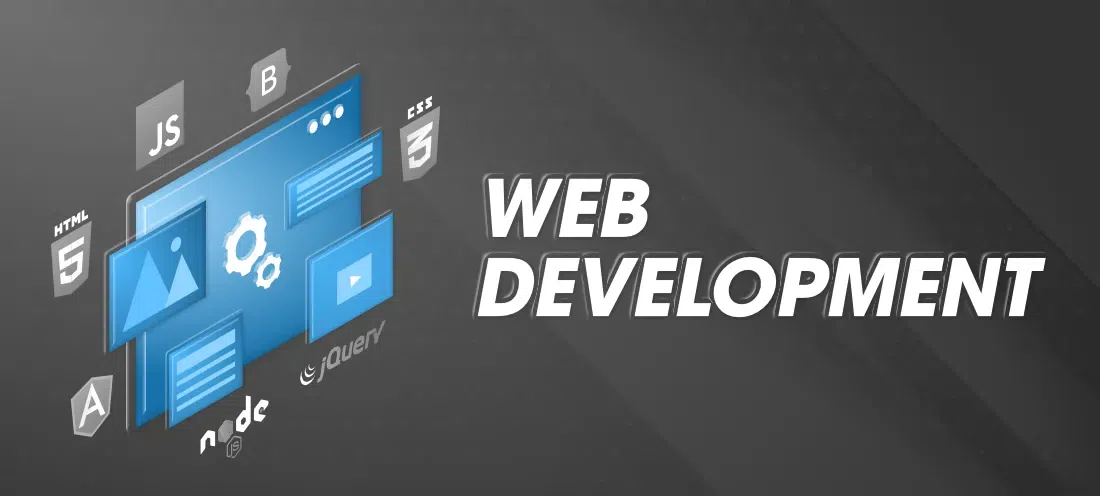Your Guide to Modern Internet Development: Patterns and Finest Practices
In the rapidly advancing landscape of web growth, understanding the most up to date patterns and finest techniques is vital for developing relevant and appealing electronic experiences. Trick factors to consider such as user experience, responsive layout, and ease of access are not just optional yet integral to the success of modern-day applications. Moreover, the introduction of Progressive Internet Apps and the combination of AI modern technologies indicate a significant shift in exactly how programmers approach their craft. As we discover these important elements, it comes to be clear that staying educated is not simply advantageous-- it's vital for those intending to master this dynamic field.
Emerging Technologies in Internet Advancement
The development of internet advancement is noted by a ruthless quest of advancement, driven by the need to boost customer experience and improve processes. Arising modern technologies continue to improve the landscape, using designers powerful devices to produce more vibrant and receptive applications. Secret among these modern technologies are Dynamic Web Applications (PWAs), which blend the very best of web and mobile apps, providing offline capability and boosted efficiency.
Another substantial improvement is the rise of Expert system (AI) and Equipment Knowing (ML), which enable individualized individual experiences and data-driven decision-making. These technologies promote chatbots, suggestion systems, and enhanced search functionalities, hence transforming just how individuals interact with internet applications.
Moreover, the adoption of frameworks like React, Vue.js, and Angular has actually reinvented front-end development, advertising modular design and efficient state management. On the backside, serverless architecture and microservices promote scalability and flexibility, enabling developers to focus on composing code without taking care of facilities.
Relevance of User Experience
Customer experience (UX) has ended up being a pivotal emphasis in internet development, especially as arising technologies improve communications. A positive UX not just boosts user satisfaction however likewise drives involvement, retention, and conversions. ecommerce web development perth. In an increasingly affordable digital landscape, organizations must prioritize UX to separate themselves and fulfill user expectations
Efficient UX design is rooted in comprehending customer needs and behaviors. This includes performing comprehensive research study, developing user personalities, and using use screening to collect understandings. By doing so, programmers can create user-friendly interfaces that assist in smooth navigating and lessen rubbing points.
Moreover, a properly designed UX can significantly impact a website's performance metrics. Researches have actually revealed that customers are more probable to desert a site if they come across inadequate use or too much packing times. On the other hand, a streamlined, user-centric design can bring about reduced bounce prices and raised time invested on the site.
Embracing Responsive Layout
In today's varied digital landscape, welcoming responsive layout is necessary for making sure optimal customer experiences across numerous gadgets. With an increasing variety of individuals accessing internet sites via mobile phones, tablets, and desktops, a receptive style strategy enables content to adjust seamlessly to various display sizes and orientations.
Receptive design utilizes liquid grids, flexible photos, and CSS media queries to produce a useful reference dynamic layout that adjusts in real-time. This methodology not only enhances use but additionally adds to improved internet search engine rankings, as online search engine favor internet sites that offer a regular experience across gadgets. In addition, receptive layout reduces the requirement for numerous variations of a site, enhancing upkeep and updates.
Moreover, responsive layout cultivates greater interaction by using a customized experience, maintaining individuals on the website longer and decreasing bounce rates. As customer actions proceeds to index evolve, investing in receptive style is crucial for companies intending to improve consumer complete satisfaction and drive conversions. In recap, embracing receptive style is not merely a fad; it is a basic technique that straightens with the assumptions of modern users, ensuring ease of access and capability despite the tool they pick to make use of.
Access in Internet Growth
Creating a website that is both responsive click resources and accessible is crucial for getting to a larger audience. Accessibility in internet growth makes sure that all individuals, despite their abilities or disabilities, can properly involve with digital content. This consists of people with visual, auditory, cognitive, or electric motor disabilities.
To accomplish access, designers ought to abide by the Internet Material Accessibility Standards (WCAG), which supply a framework for making web material much more perceivable, operable, understandable, and durable. Key methods include using semantic HTML components, giving different message for pictures, guaranteeing enough color comparison, and allowing keyboard navigating.
Moreover, carrying out ARIA (Available Abundant Internet Applications) qualities can boost accessibility, particularly for dynamic content and advanced interface. Evaluating with real individuals, including those with disabilities, is vital to determine possible barriers and improve individual experience.

The Rise of Progressive Web Apps
A significant shift in internet development has actually arised with the rise of Progressive Web Applications (PWAs), which seamlessly incorporate the very best functions of mobile applications and conventional sites (ecommerce web development perth). PWAs are created to supply individuals with a fast, trusted, and engaging experience, regardless of their web connection. This is accomplished through service employees, which enable offline abilities and history syncing, making certain that users can access material also in low-connectivity circumstances
PWAs additionally leverage responsive style principles, ensuring that they function efficiently throughout a variety of devices and screen sizes. This flexibility is critical in an era where customers increasingly count on smart phones for their online activities. PWAs eliminate the demand for separate application store installments, permitting for simpler and more easily accessible circulation.

Conclusion
Finally, modern web advancement requires a multifaceted technique that encompasses arising technologies, individual experience, responsive style, availability, and the application of Progressive Web Apps. Complying with these trends and best techniques not just boosts user engagement yet likewise fosters inclusivity, ensuring that digital material comes to varied target markets. By prioritizing these components, designers can produce impactful applications that meet the progressing needs of individuals in a progressively digital landscape.